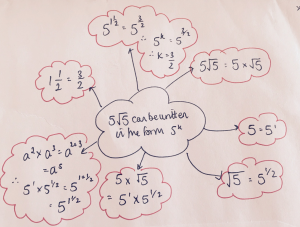This year, I finished my first two years of teaching on Teach First’s Leadership Development Programme. I said bye to my placement school and I now look forward to beginning work at Michaela Community School in Wembley Park from September.
This blog post will outline the biggest impact I had as a teacher. It is specific to my second year of teaching after learning from one of – if not – the biggest mistake I had made, during my first year of teaching. I did not set up my Y10 students for academic success in Y11 during my first year, because
- a) I did not know of the huge positive impact it has in Y11 and;
- b) I did not know how to either.
This is not to say that you should not set up each and every class. I say this because at my placement school, and this is the case in many schools if not all, is that you carry on teaching your Y10 class into the following year for Y11.
The biggest impact I had was in setting up 10X1 (Set 1) with a well thought out two year plan. I do believe that KS4 is a 5 year plan but that is a different blog post. 10X1 are my favourite class. They taught me so much. They enabled me to be the best teacher I could be. There was not one lesson where I had not thought, at the end of the 60 minutes, that each and every of the 28 girls were exceptional, intelligent, confident and inspirational. I am going to share my success with 10X1 with you. It is valuable and it will help you prepare your Y10 class if you are just starting to teach this September, or even if you have been teaching for years.
1) Scheme of Work Mapping
This sounds daunting and time consuming. It isn’t. Look at the topics that your scheme of work suggests for you to teach your class in Y10 and Y11. Restructure the order to ensure that each topic lends itself nicely to the next inasmuch as each concept taught previously can be developed or linked to the concept being taught next. For example, teaching fractional indices before moving onto teaching surds.
The benefits behind remapping the sequencing and order in which topics are taught are extensive. Firstly, it gives you an idea of the bigger picture so you can see how all the concepts link; you can also explain and teach the connections to your students. If you teach fractional powers months later or before teaching surds then students will see the concepts as too fragmented and isolated concepts. Teaching one before the other allows students to recognise the connection between the two concepts. This betters their conceptual understanding, and through continual recall of fractional indicies in relation to surds it will also strengthen their understanding in their long-term memory. (It is more complex than this – please refer to previous blog post)
2) Knowledge framework
In this context, a knowledge framework is a web of connected pieces of factual knowledge (Figure 2). The stronger the connection between different pieces of factual knowledge the more accurate one’s conceptual understanding, lending to the ability to manipulate complex problems. For example:
Figure 1 – GCSE 1H 2015 Exam question Q22(b)
This question (Figure 1) can be solved through a clear and accurate understanding of different pieces of connected factual and procedural knowledge. Look at the amount of knowledge students need to know to attempt this question, and more importantly the interplay and connections between these different pieces of knowledge:
Figure 2 – Example of a Knowledge Framework outlining the factual and procedural knowledge required for students to attempt such a question. Also an example of a problem type where two concepts are linked.
As teachers we can only enable our students to think critically if:
- a) they have a clear understanding of the factual knowledge and procedural knowledge behind a concept;
- b) they have a clear understanding of how to apply such factual knowledge and procedural knowledge to different categories of problem types;
- c) they are given sufficient time to practise categories of different problem types in an organised fashion; and
- d) they are taught and given the time to practise unusual complex problem types, where the necessary factual and procedural knowledge is interleaved throughout the problem in question.
I would really recommend for you to have a go at remapping and sequencing the different topics for the year and look at the first three topics that you will be teaching in half term 1. How are these topics connected mathematically? How can I teach these topics in an interconnected fashion so students can see the connection between index rules, index notation and surd notation, improper fractions and mixed numbers? How can I structure my teaching to enable essential recall and consolidation of prior knowledge necessary for students to access the topic being taught? What are the unusual problem types which I can expose my students to, in order for them to apply their knowledge of what has been taught in turn enabling them to think critically?
My next blog post will outline the practical and consistent practice I put in place in order to allow students to retain their learning for the long term.


Recent Comments